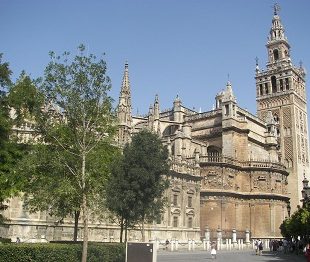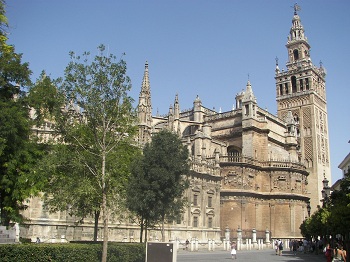
Visiting Cordoba, Granada and Sevilla – Andalucía culture at its best
Tucked away inland behind the costas and a myriad of mountains, lie three of Europe’s most culturally enriching cities – Cordoba, Granada and Sevilla. For many, old Andalucia epitomises Spain: Bullfights, Moors, gypsies and flamenco dancing. For centuries, Andalucia was one of the poorest parts of Spain, but because of its past and deep-founded love for simple pleasures that have become so embedded into Spanish culture, the fortunes of this region have changed, helped inexplicably by the huge amounts of tourists that visit Andalucia’s three most culturally credited cities each year.

For a city that is the capital of its region, the lack of traffic is a noticeable but pleasant peculiarity of Sevilla. Instead, horse-drawn trams glide through the city’s glut of cobbled streets where attention to detail is so imperative that every individual pebble has been immaculately varnished. This flawless perfection percolates throughout the city with intricate arches and old-fashioned lamps, straddled by white gardenias. The Jardines de Murillo, situated amidst the old Jewish quarter is essential to visit, bearing 100 foot high trees whose twisting trunks have a 15 foot diameter. The cathedral in Sevilla, which began being built in the 12th century but was not completed until the 18th century, is an embodiment of Spanish baroque with highly ornate and decorative architecture.

Visit the Sevilla tourist guide for more information on the city.
The city of Cordoba is pleasantly situated beside a loop of the mighty Guadalquivir River and houses hundreds of charismatic and cosy riverside restaurants and bars. But Cordoba’s greatest asset is La Mezquita, with its intricately elaborate attention to detail, is arguably the most beautiful and grandest mosque ever built by the Moors in Spain.
Click here to find out information about Cordoba and when its fiestas take place visit.
It is little wonder the Alhambra Palace surrounded by the epic and snow-tipped Sierra Nevada and above the neon lights of a nocturnal city, attracts more than three million visitors a year, making it Spain’s top tourist attraction. The name “Alhambra” actually means “red or crimson castle” in Arabic, which is perhaps because of the scarlet hue this magnificent building acquires during certain times of the day. The dimly-lit backstreets full of no-frill accommodation for less than 30 euros a night, escorted by shady looking characters uttering “hashish” under their breath, gives Granada a unique excitement not found in Sevilla or Cordoba.

Visit the official site for tourism in Granada.


